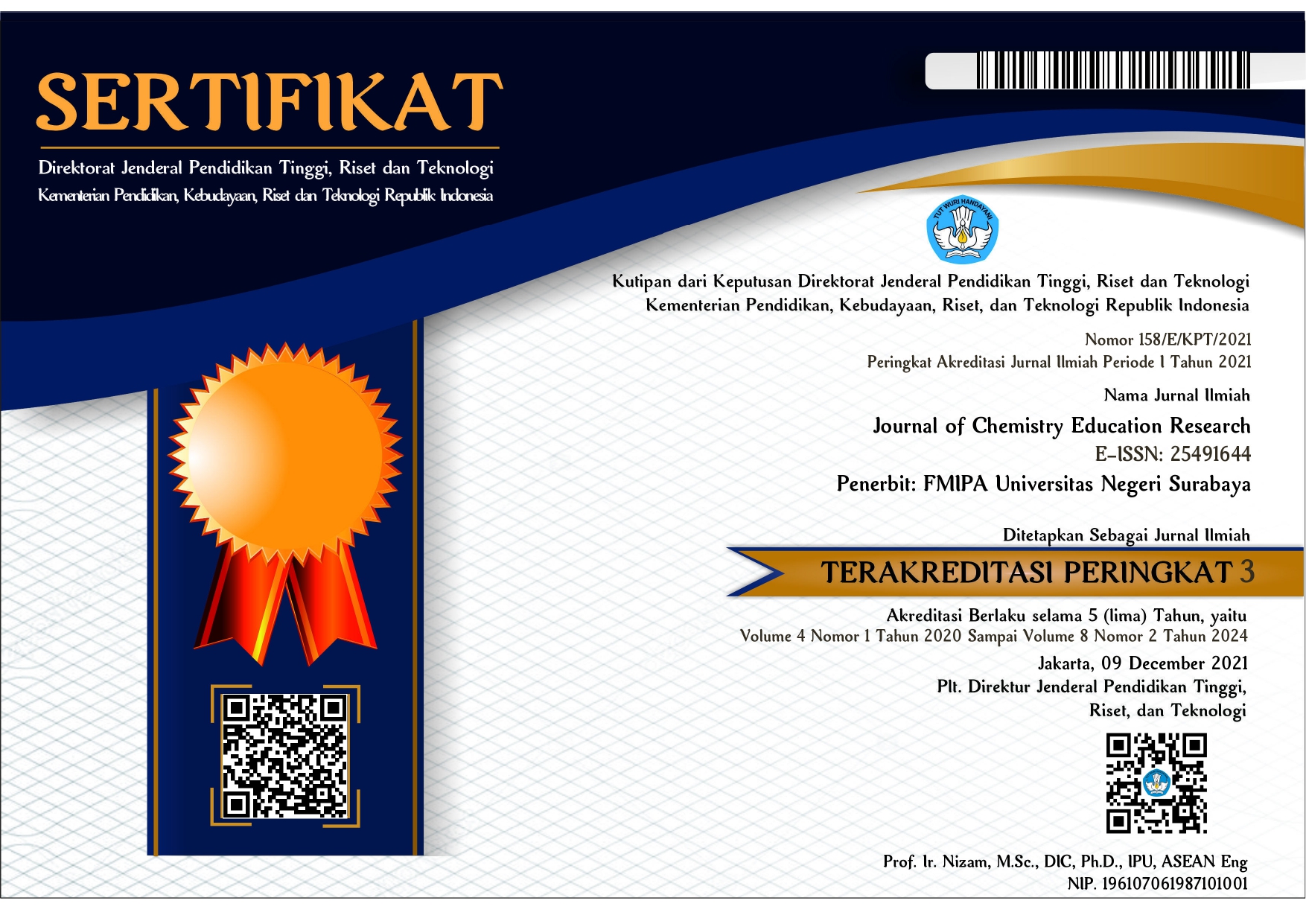DESCRIPTION OF THE ROLE OF GUIDING BOOK IN LEARNING BASED ON ASSESSMENT AS LEARNING
DOI:
https://doi.org/10.26740/jcer.v6n1.p77-83Keywords:
guiding book, assessment as learningAbstract
Abstract. The aim of this research was to describe the Guiding Book which helps implementing assessment as learning. The research subjects were 29 students of Undergraduate Program of Chemistry Education, Universitas Negeri Surabaya. The research methods were questionnaire and documentation method. Questionnaire method was to record student responses to the role of the Guiding Book which helps implementing assessment as learning. The documentation method was to record students’ activity in implementing of learning based on assessment as learning. The document used in this documentation method which was assessment as learning based worksheet. The result showed that the percentage of students response was about 81% for the six items, which means that the Guiding Book played a very helpful role in the implementing of learning based on assessment as learning. The result of observations on assessment as learning based worksheet showed that students implemented of learning based on assessment as learning by utilizing or being inspired the contents of the Guiding Book.
Keywords: guiding book, assessment as learning
References
Earl, L. 2003. Assessmen as Learning: Using Classroom Assessment to Maximize Student Learning. Thousand Oaks, CA, Corwin Press.
Ussher, B & Earl, K. 2010. Summative and Formative: Confused by the assessment terms? New Zealand Journal of Teacher Work, 7(1) 53-63.
Ministry of Education. 2010. Growing Succes: Assessmen, Evaluation and Reporting in Ontario School. Diakses tanggal 25 Januari 2017 dari http://www.edu.gov.on.ca.
Rowe, J. 2012. Assessmen as Learning- ETEC 510, Diakses Oktober 2016 dari www.etec.ubc.ca/510wiki/Assessment_as_Learning# Assessment_ for_Learning.
Earl, L. & Katz, S. 2006. Rethinking classroom assessment with purpose in mind. Assessment for learning, assessment as learning, assessment of learning. Western and Northern Canadian Protocol for Collaboration in Education (WNCP).http://www.wncp.ca/media/40539/rethink.pdf
Lee, I. & Mak, P. 2009. Assessment as Learning in the Language Classroom. Assessment and Learning, Issue 3.
Muchlis; Ibnu, Suhadi; Subandi dan Marfuah, Siti. 2019. Dampak Implementasi Assessment of, for dan as Learning Berbantuan Guiding Book terhadap Persepsi tentang Asesmen, Keterampilan Metakognitif, dan Hasil Belajar Mahasiswa Jurusan Kimia. Disertasi yang tidak dipublikasikan. Malang: Universitas Negeri Malang.
Dann, R. 2014. Assessment as learning: blurring the boundaries of assessment and learning for theory, policy and practice. Assessment in Education: Principles, Policy & Practice, 21(2).
Riduwan. 2012. Skala Pengukuran Variabel-variabel Penelitian. Bandung: Alfabeta.
DE & T. 2013. Strategies for Asssessment As Learning. Diakses tanggal 24 April 2017 dari:https://www.eduweb.vic.gov.au/edulibrary/public/teachlearn/student/activity4_4a.pdf.
Bercher, D.A. 2012. Self-monitoring Tools and Student Academic Success: when Perception Matches Reality. J Coll Sci Teach.
Topping, K.J. 2017. Peer Assessment : Learning by Judging and Discussing the Work of Other Learners. Interdisciplinary Education and Psychology.
Downloads
Published
Issue
Section
License

This work is licensed under a Creative Commons Attribution-NonCommercial 4.0 International License.
 Abstract views: 531
,
Abstract views: 531
, PDF Downloads: 373
PDF Downloads: 373



